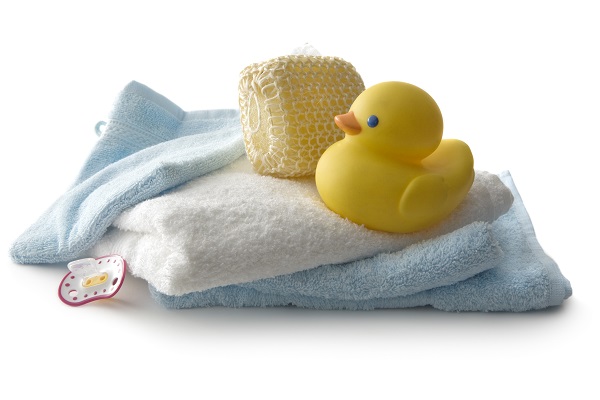A positive way to prevent many behavior problems is to keep your baby or toddler informed of what is happening next. Transitions can be particularly hard when babies and toddlers don't know what to expect. For example:
- A baby is less likely to be upset when mom suddenly leaves if she indicates (by showing, pointing, or signing) that her cell phone is ringing and she’ll be right back.
- A toddler playing with a toy is likely to stop willingly when the parent holds up a bib and a spoon, saying "Time for lunch!"
Parents tell hearing children where they are going in the car, or how much time they have left before it is time to stop a favorite activity. Children who are deaf or hard of hearing want to know that, too.
In fact, it is even more important for you to keep your baby informed, because the child might not hear far away cues to changes in activity, such as bath water running, the telephone ringing, the doorbell chiming, or someone calling from another room.
Signal Transitions Using Real Objects
 Hold the rubber ducky and towel and say or sign, "Time for bath." The child will begin to associate the object with the routine phrase "Time for bath" to help understand the language.
Hold the rubber ducky and towel and say or sign, "Time for bath." The child will begin to associate the object with the routine phrase "Time for bath" to help understand the language.
Use Picture Cues to Help Children Understand

A baby is less likely to be upset when mom suddenly leaves if she indicates (by showing, pointing, or signing) that her cell phone is ringing and she’ll be right back
Take pictures of important places, such as a church or synagogue or local grocery on your cell phone.
- Once your little one is buckled in, show the child which location you are visiting.
- This helps your child anticipate and learn the language for important places.
Later, show the child the cell phone photo, and add the language: "We are going to the grocery store. Let's get your coat," and let your child find the picture.
Use Timers to Define Limits
As the child gets a little older, you can use a small, two or three minute hourglass egg or sand timer. Another option is various apps on your phone that have visual ways of showing how much time is left.
- Many parent use auditory and visual timers on their phones to set limits for their little ones.
- Until the language and difficult concept are familiar ("You need to stop in three more minutes," or "Almost time to stop"), timers support the idea that a transition is about to happen.
- Then, you can use an object, a gesture, or a familiar word or phrase for the next activity, developing an understanding of "…then we will_______."
"Show & Tell" – Talk About What's Happening:
Keeping your baby informed also means telling your baby what is going on. Sometimes as hearing people, we don't think about subtle ways that we are leaving a child who is deaf or hard of hearing out.
When the phone rings you leave your play with the baby and run to get it. Your baby wonders where you went, why you left, and if you are coming back?
The phone may be hard to hear if it is far away.
If you have a cell phone, helping the baby hear the phone will be easy.
Use Gestures and Body Language
Sometimes the information your baby needs is that a behavior is not appropriate and has consequences.
- Throwing blocks means that the blocks will be put away.
- You can warn your baby with gestures, firm headshakes, or simple words, following through the first time your warning is challenged.
What visual strategies could you use to help your child understand what is happening next? Here are some examples to get you thinking.
| Baby is absorbed playing with blocks, but it is time for dinner. |
 | Point to the dinner table. Say or sign, "Let's go eat!" Show excitement. |
| Your infant is drowsy, but you need to take her to go see the audiologist. |

| Show the hearing aid and a picture of the clinic. Show the infant's coat and say, "Time to go bye-bye." |
| Your two year old does not like bedtime. She likes to stall and keep looking at the books. |

| Give your little one a warning. "Two more minutes to read." Turn over the sand timer. |
| Your one year old is having fun in the kitchen. It is time for her nap. |

| Hand the baby her favorite blanket. Say or sign, "Nap time, sweetie." |
| Your 18 month old needs to help pick up and get ready to visit grandma |
 | Show the picture of Grandma. Say, "Let's go see grandma. I will help you pick up." |